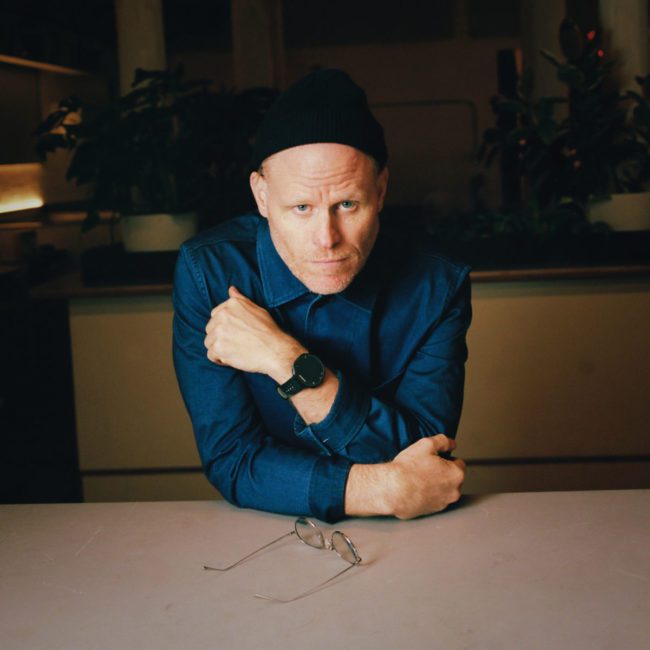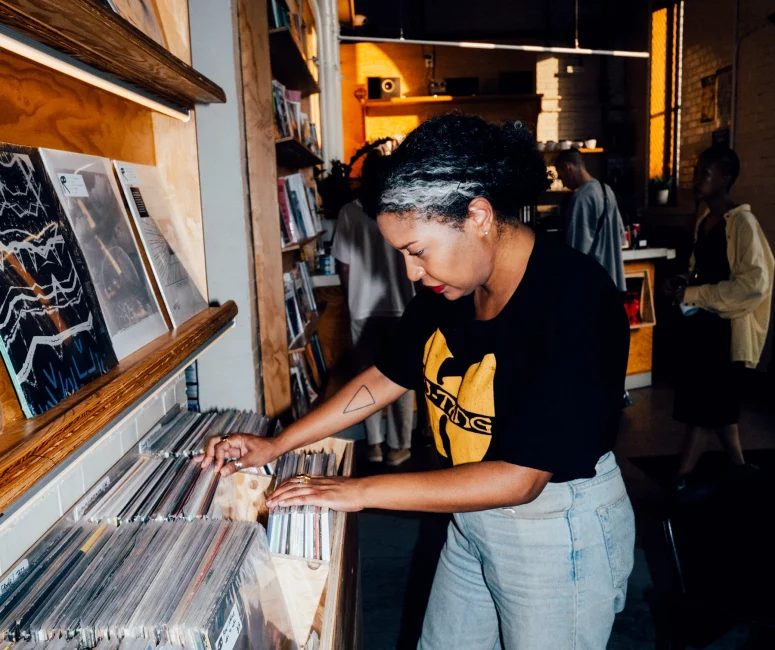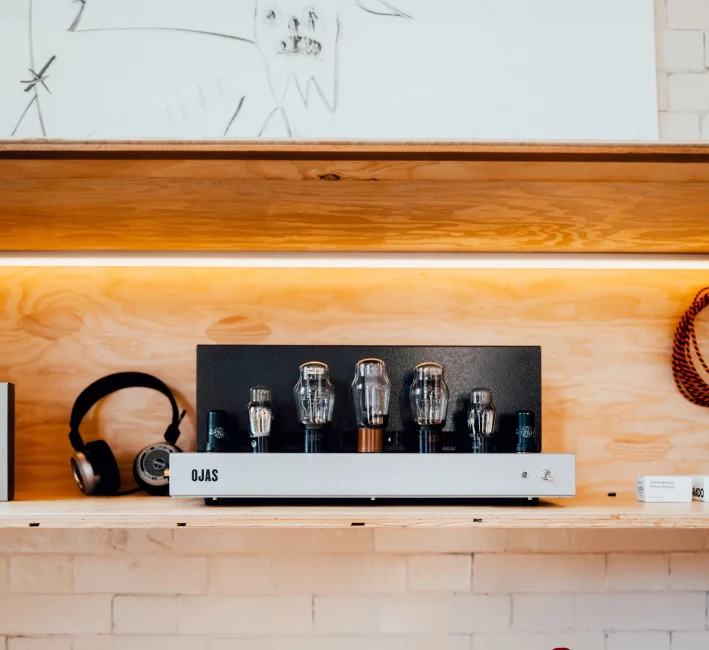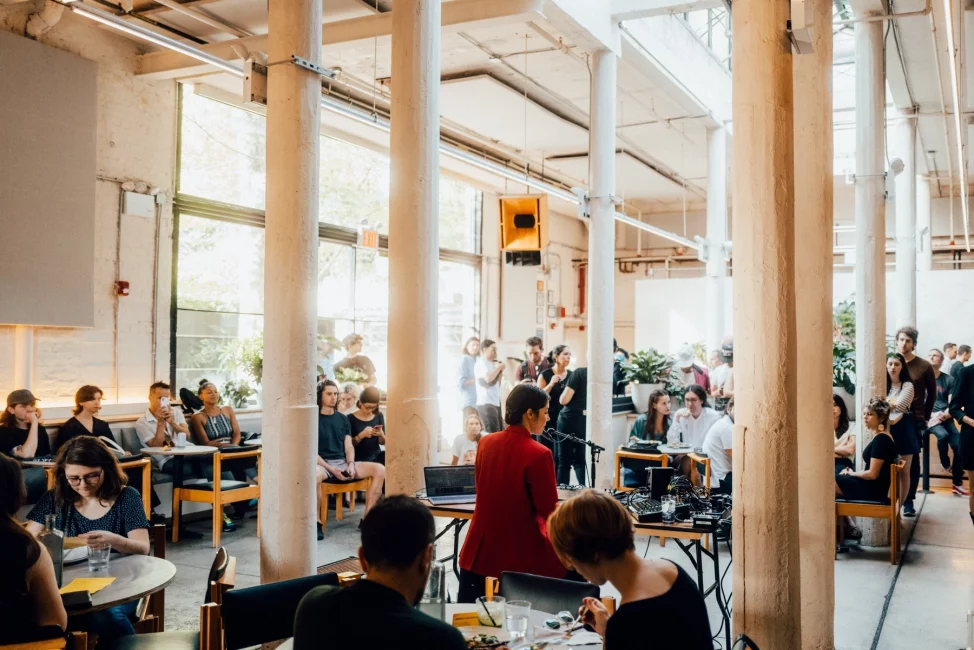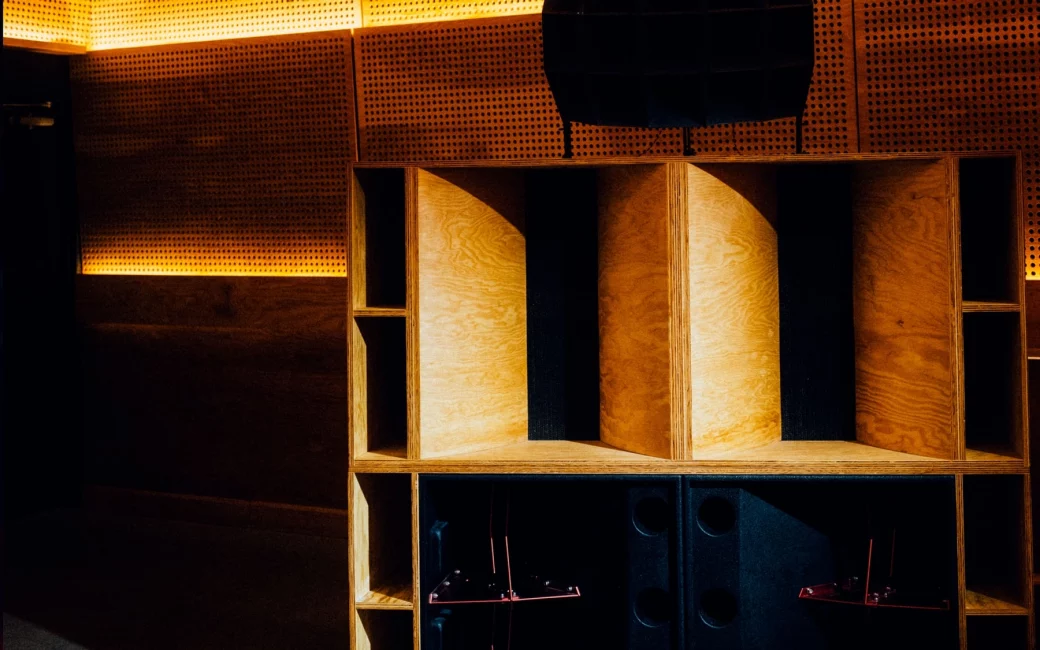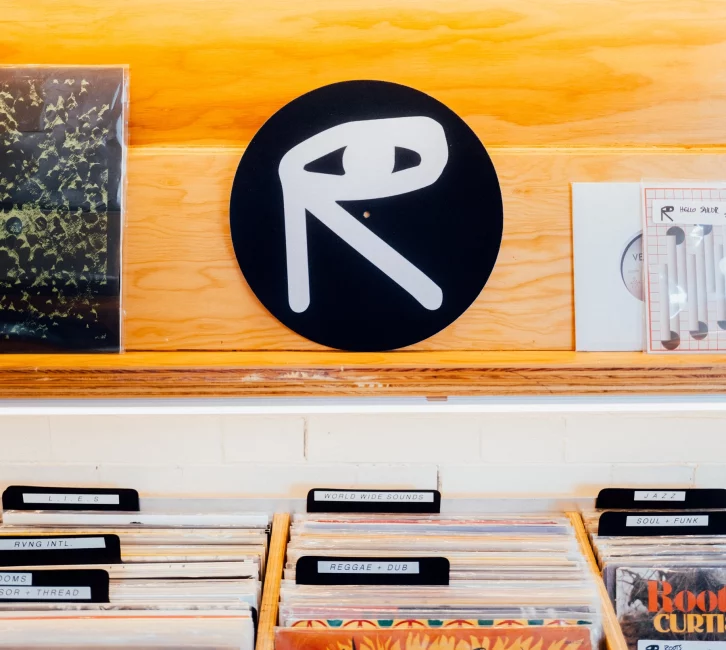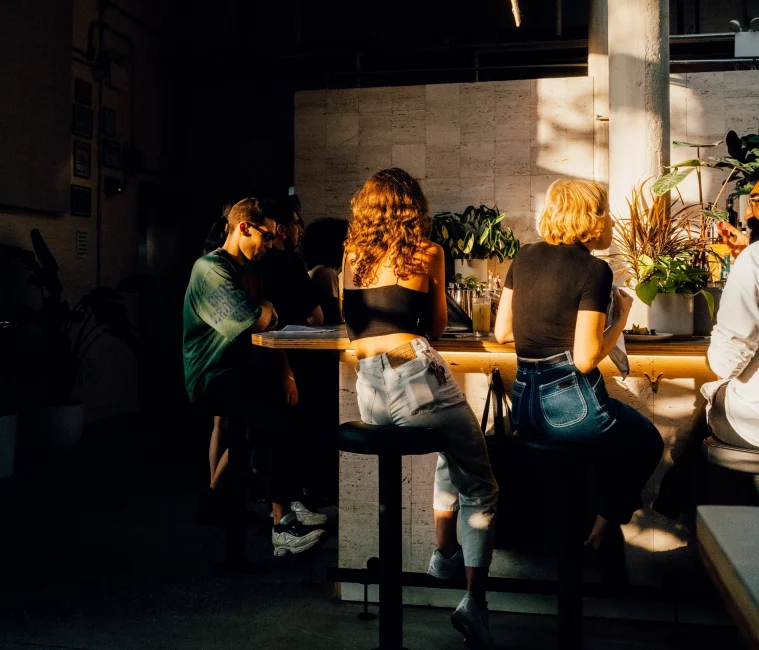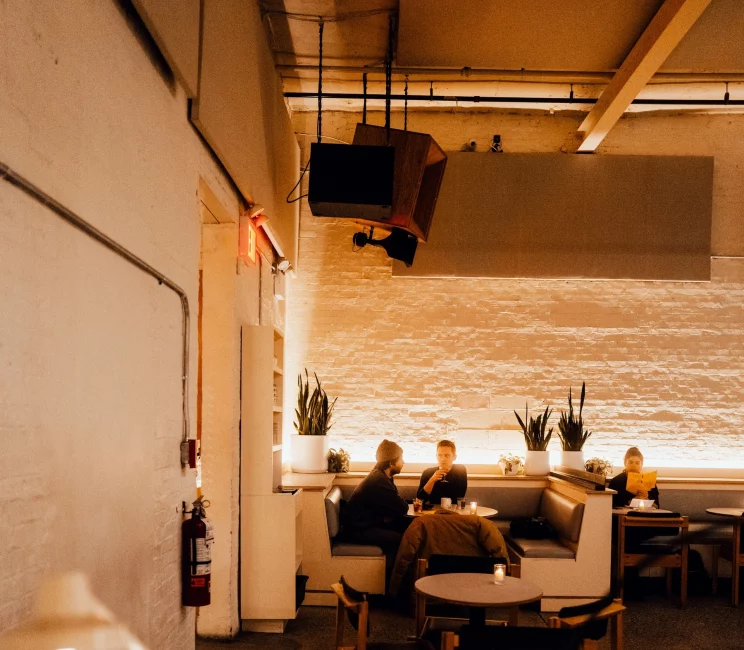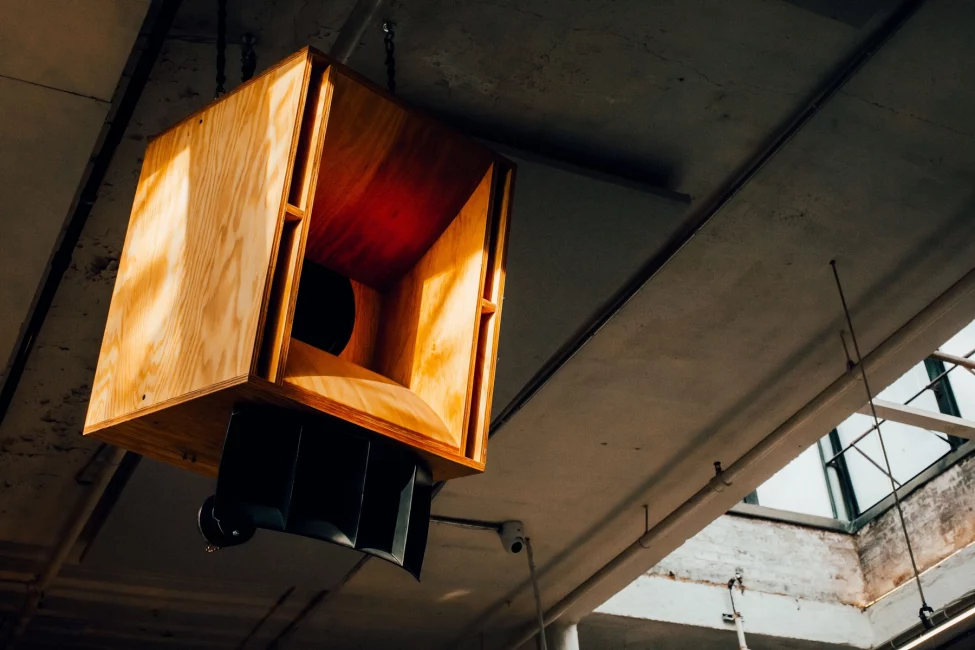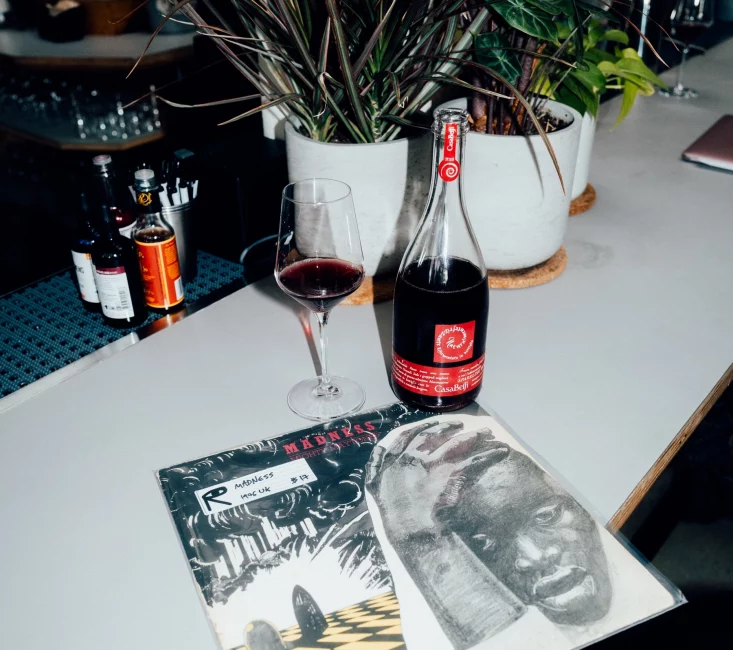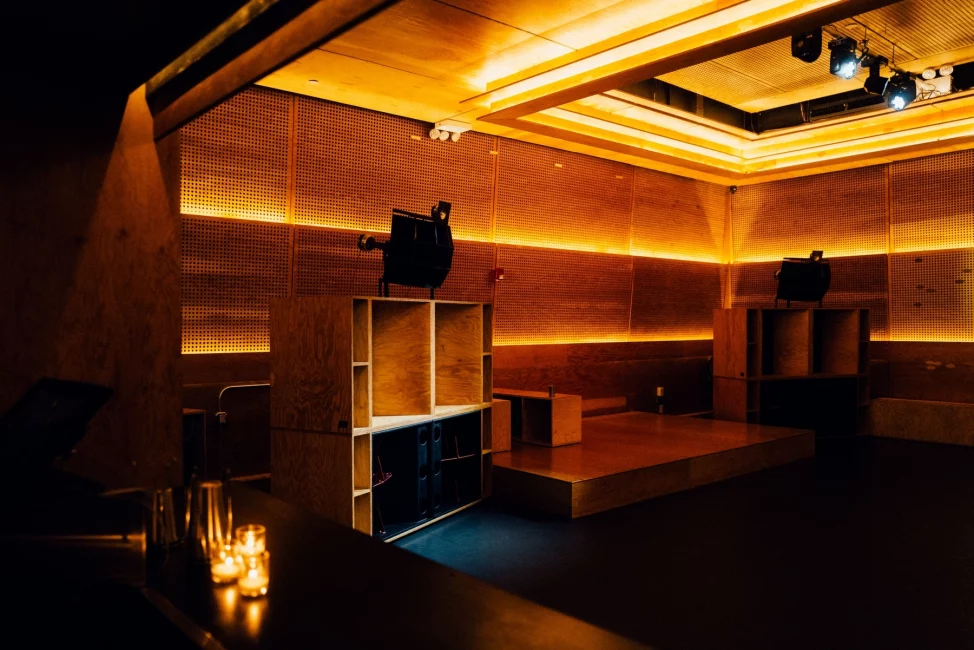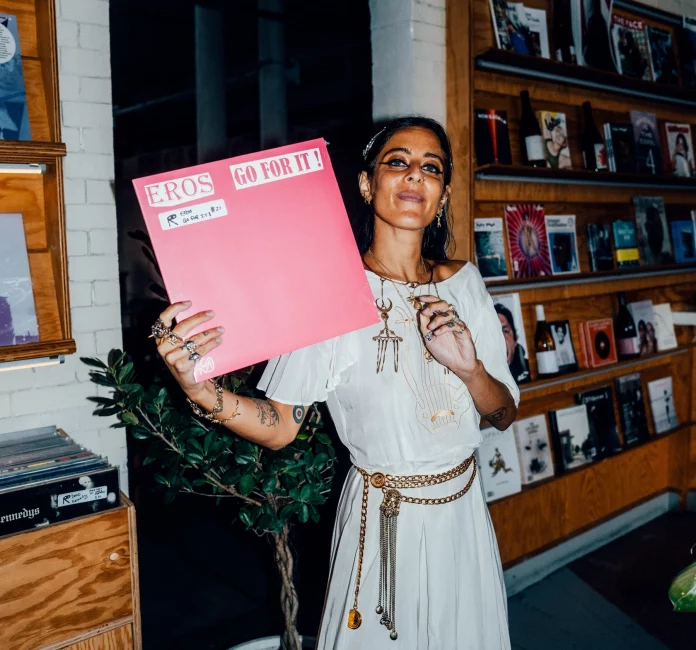There are few people in the electronic spectrum that the term “multidisciplinary” can be applied; but with four self-released albums and a musical career spanning two decades, Francis Harris merits this accolade with absolute distinction.
Based in Brooklyn, Harris has adopted many facets over his long-standing career; as a musician, producer, DJ, writer, label co-founder and as the director of Public Records — an audiophile bar, club and restaurant with an inherent focus on local artists and intimate performances.
Back in 2014, Inverted Audio produced a film with Francis Harris in London about his third album ‘Minutes Of Sleep‘, which stood out from the crowd for its close affiliation and likeness to the output of Terre Thaemlitz, otherwise known as DJ Sprinkles. Fast forward eight years and we return to the source for another enriching conversation with Francis, discussing his fourth album ‘Thresholds’, released in February 2022 through his Scissor & Thread imprint, once again delivering a beautiful and timeless œuvre of contemporary music.
In our interview, we touch upon Harris’ personal musical developments over the past two years, taking into account the challenges of operating a venue throughout the COVID-19 pandemic. We also discuss his musical heritage, sources of inspiration, album collaborations and even include a brief philosophical detour, centred around the thinkers Henri Bergson, Gottfried Wilhelm Leibniz and Gilles Deleuze.
As we expected, Francis Harris delivers a meticulously crafted and thoughtfully considered podcast contribution to the IA MIX Series, brimming with tracks that have inspired him in recent times, perfect for listeners that are after an evening of introspective listening.
Interview by Niclas Gillich
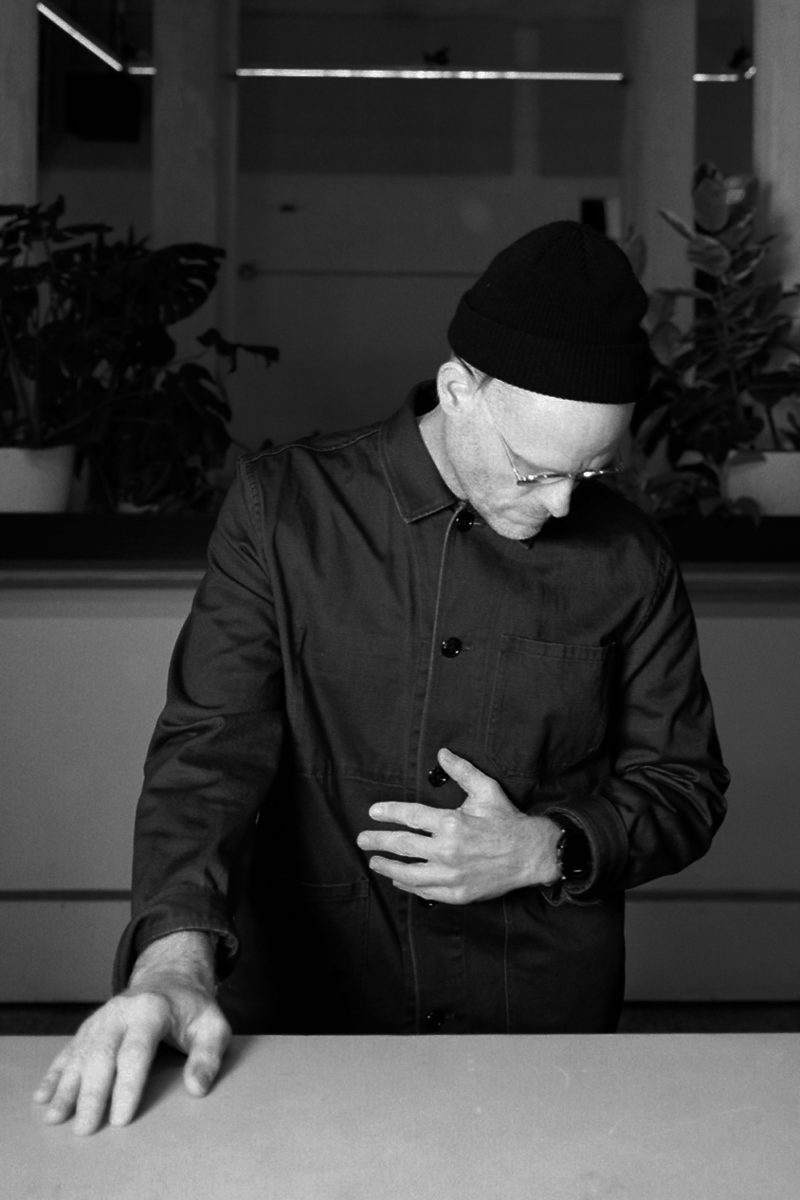
"The valuation of music through categorical thinking devalues the process, and I think that mostly happens as a way to deny that minor art practices involve real labor"
Hi Francis, thank you for taking the time to answer these questions and for recording your mix. It has been 8 years since we shot our film with you at the Barbican. A lot has changed since then, including a number of incisive world events. In 2019, you established your own venue Public Records, located at 233 Butler Street in Gowanus, Brooklyn — a multi-functional space, incorporating a restaurant, bar, concert and club space, and even a book and record store. On top of that, your fourth studio album, ‘Thresholds’, just dropped on Scissor & Thread. Generally speaking, how do you think you have progressed and developed since we made that film?
It’s rather strange (not necessarily in a bad way) to have life events somehow made as a way to talk about personal or artistic progress. So much happens in the course of a year, let alone years, life can have a dizzying effect.
Suffice to say, between the extreme difficulties of opening a business as complex as Public Records and then somehow keeping that same business less than a year after it was opened on life support, my everyday routines have been mired in extreme anxiety, so, in a lot of ways, my artistic pursuits have become somewhat of a refuge to the daily grind of being a business owner. It’s certainly changed the way I work.
That said, I’m not implying that studio production isn’t somehow work, as that would fall into that lame capitalist trope of “doing what you love”, as an excuse for not being paid a living wage to produce music. I’m just fortunate to have the ability to remove myself from a reliance on supplemental forms of income (touring) to support my music production work. So in this sense, a lot has changed since we last spoke.
I think I was really wrapped up in an internal narrative about who I was in this industry as it related to my own personal traumas. In retrospect, I feel those traumas were in many ways used as a crutch to not face up to the fact that at that point in my life, I simply was unhappy with the hustle of touring to support music production practices.
Now, even with all the pressures of a 7 days a week job as a business owner, I feel more in touch with who I am as a person as most of my weeks are involved in the collaborative process of keeping wheels turning at a physical space of work and a community of people that we (hopefully) provide a hospitable environment too. This fundamental change has deeply affected how I approach my own music and art practices as they are informed much more by a communal life rather than one of isolation and a life on the road.
Speaking of personal development, please tell us about your musical upbringing: When did you start diving into the music realm, and did you have any role models to look up to and learn from as a kid?
I grew up in Las Vegas and was pretty enthralled immediately by the hardcore punk scene. There was a record store in Vegas called The Record Exchange, then called The Underground that was owned by a local hero, Wayne Coyner who sadly passed away in 2021.
It was the heart and soul of the counter cultural scene in our town. Just about every punk/noise/hardcore record you can imagine you could find there. Also, weirdly enough, the best college radio station in the country, UNLV’s KUNV had a punk show on Wednesday nights called Lunch with the PMRC. It was an invaluable part of my musical upbringing as the records they played were absolutely insane. I probably wouldn’t be the person I am today as a musician if it weren’t for those two things.
Since that time, I’ve always been enthralled by underground music culture. Entering college at Michigan State, I became even more deeply immersed in the hardcore scene, something I feel really lucky to have experienced as it was a special time before social media and the “idea” of being a part of a countercultural movement. A lot of the spirit of this time continued in the early rave scene, but I feel, once it became more about a cult of personality rather than about a silly but worthwhile hope for a more equitable while at the same time inspiring life of thinking, concepts, art and community, counter cultural movements kind of died.
Before we get into your new album, let’s first talk about your mix. Where and how was it recorded, and can you tell us more about the musical flow behind it and subsequent track selection? What kind of atmosphere have you set out and what would be your preferred or recommended setting, physical as well as psychological, for it to be listened to?
The mix was recorded in the early hours of the morning in the booth at Public Records. I can’t really speak to the musical flow of it. I just gathered a crazy amount of records and songs on my USB and let it rip. As far as recommended settings, that’s hard to say. I listen to music in all different types of settings. I suppose if I were to be dogmatic about it, I would say, hey, sit down and listen to all these incredible composers in this mix. I’m super lucky to have the privilege to be able to buy all this music.
What types of music and, more specifically, which records do you enjoy listening to at home? Do you have an all time favourite that you like to return to over and over again? Also, is there anything or anyone, be it record labels or specific artists, that you find particularly interesting and inspiring at the moment?
I listen to just about every genre of music at home save for dance music. As far as favourites go, that changes from year-to-year, but if I were to pick my most listened to over the course of the past year, it would have to be Laura Allen with Paul Horn ‘Reflections‘ released via Unity Records. It’s hard to imagine a more stunningly exquisite and perfect record. It has often moved me to tears.
As far as inspiring artists, I would say that Eliana Colachis Glass who is featured on this record has been my greatest source of inspiration. I’ve been producing her debut solo record over the past year and it’s got to be one of the most remarkable pieces of art I’ve ever encountered. We’re taking our time on the record, but I’m really excited to get it out into the world.
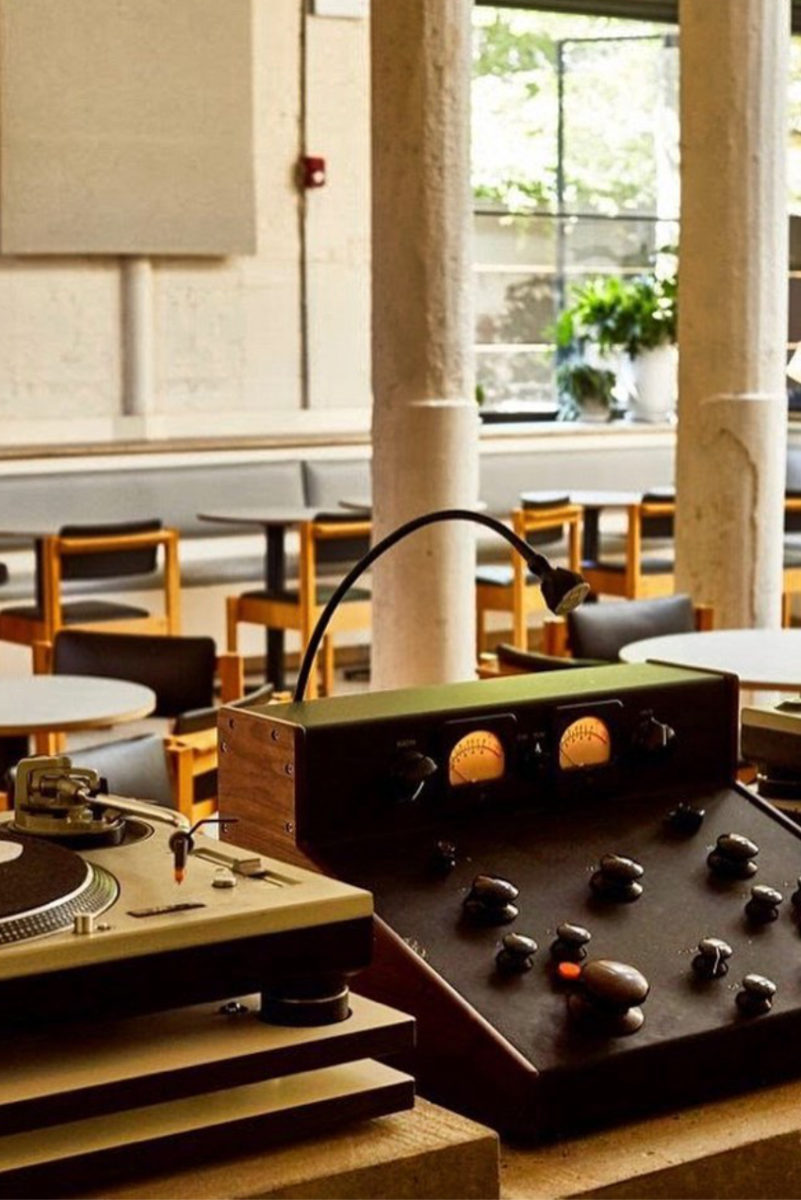
"All American artists, all a core part of the Public Records sound. I’d say to Europeans out there, come check out what's happening in New York!"
Your new album ‘Thresholds’ was released on Scissor & Thread in February. How long have you been working on the record, and how does it feel to finally have it out in the world?
I actually have a really hard time with releases. I go through a pretty deep depression when records finally come out. I try not to pay attention to much of any press (although I fail at this), as I think I hate myself enough to then have to read about my work.
With your Studer mixing desk being a recurring theme in your Instagram feed, one might conclude a certain affinity of yours towards analogue gear. Please tell us about your current studio situation and the instruments or gear that you used on ‘Thresholds’.
The Studer purchase was the best decision I’ve made with regards to my studio. A few years ago, I purchased it then had my good friend Phil Moffa (a genius) come over and rewire my whole studio and set up a few new patch bays. Now all the gear talks to each other and works rather seamlessly. I can patch in just about anything and start to work. This has significantly made my process more streamlined which has allowed me to get more creative in my compositional approach.
On this particular LP, I recorded several hours of field recordings during lockdown as the sonic bed of the compositions then utilised a lot of synths this time around and particularly a new FM synth (Elektron Digitone), a Waldorf Blofeld, a Yamaha TG33, Korg Minilogue and my trusty MFB Tanzbar for any drums. For FX, I used a bunch of guitar pedals, most often an Electro-Harmonix Memory Man Deluxe.
The album also features vocalist Eliana Glass, Darkside’s Dave Harrington, Will Shore, Mark Nelson (aka Pan•American), Gareth Quinn Redmond and Greg Paulus. How did these collaborations come about, and has it been your idea from the get-go to include other musicians in the writing and recording process?
I love collaborating with other musicians. Most of my friendships have developed through these collaborations. You really get to know someone through their musical voice. I’ve worked with Greg Paulus (trumpet) on all my albums, and even though we don’t see each other very often, I consider him a close friend.
I started working with Will and Dave on ‘Trivial Occupations‘ and that’s also led to two friendships. Will’s vibes just seem so natural combined with my music and Dave is just the everyman of music. His sensibility is beyond comprehension to me. Just an amazing sense of how the smallest sound can have a significant impact.
Mark (Pan•American) and I met at Public Records when I booked him in 2020. He’s definitely one of my musical heroes and I was very honoured that he wanted to play on the album. I can’t emphasise enough how much his music has impacted my life.
Gareth, strangely enough, reached out to me when I posted a record of his that I played at a show I was doing in my garden at Public Records called My Brunch in the New Age. His last LP, a sublimely evocative display of minimalism, has been one of my favourites of the past few years, so having his touch in Thresholds was a big move and really transformed the record.
Eliana and I met for the first time virtually. She was part of a series on our public access channel during the pandemic that we did with the jazz department at the new school for social research. She performed and my business partner Shane Davis and I were blown away by her performance. We reached out and started a dialogue with her about her music. This led to a long term collaboration with my music and her debut album.
Speaking of collaboration: The photo of your record’s artwork is by Anouk Schneider, a long-term creative partner of yours. How did you meet and when did you decide to start working together?
Anouk was introduced to me through my friend Philipp Jung. She and then partner Daria Mechkat helped us develop the design language of Scissor and Thread. Anouk continued to work with us even after her partnership with Daria ended. Anouk has an uncanny eye for portraits that works well with my own artist vision, finding singular beauty in the mundane passage of time.
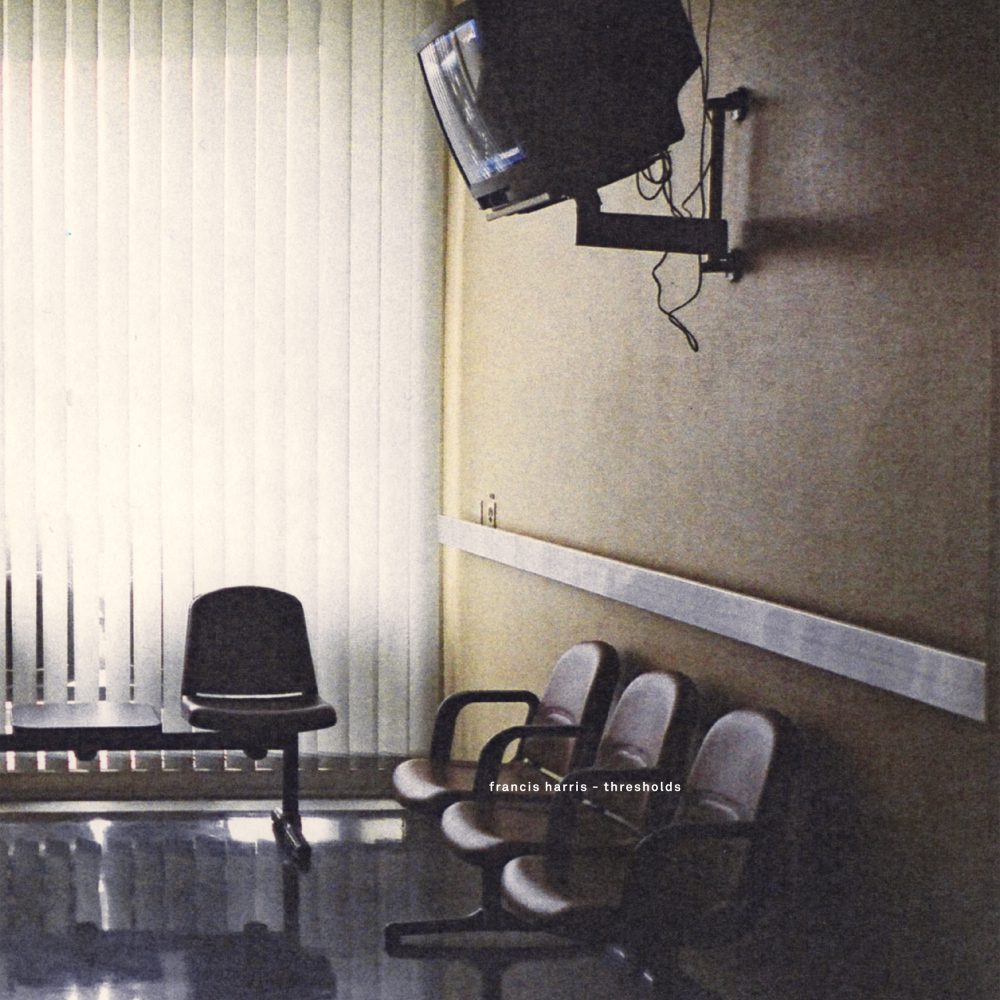
"That waiting room could very well be the waiting room at a maternity ward, but our brains automatically go to another place. This gets to the crux of our limited physical existence at odds with the vastness of time"
We have been puzzled over where the shot was taken; it appears to be a doctors waiting room or something like that — a rather bleak and impersonal space, quite contrary to the depth and intimacy conveyed by your album. Why did you choose this shot in particular, and what does it symbolise?
The waiting room felt just right for the uncertainty at the centre of thresholds. We are always and ever on the skirt edge of understanding our place in life, always and ever behind the beat. The experience of intensive time (nonlinear) in our individual and extensive lifetimes (impermanent and linear) immediately gives rise to melancholy, in a similar fashion to looking at old family photographs or the feeling you get looking at an abandoned house. That waiting room could very well be the waiting room at a maternity ward, but our brains automatically go to another place. This gets to the crux of our limited physical existence at odds with the vastness of time.
In the announcement of your album you included a quote by the French philosopher and writer Henri Bergson. It also mentioned that the record is influenced by German philosopher and scholar Gottfried Wilhelm Leibniz, a precursor of the Age of Enlightenment, as well as by the French post-structuralist philosopher Gilles Deleuze. Can you tell us more about the record’s intellectual foundation, and also about the significance of other art forms, such as literature and philosophy, for your musical endeavours?
The album is really an exploration of the intersection between Deleuze’s reading of both Bergson and Leibniz exploring intensive (process-driven) modes of thought rather than extensive (value-driven). Without getting too technical philosophically, Deleuze’s thinking, or at least the part that interests me most, focuses on the in-exhaustive nature of concepts (underdetermination of concepts) always and ever creative, generative, and ongoing, and in relation to the exteriority of other concepts, making connections between them as an infinite multiplicity always and ever in process.
My own practices that began the making of this album, were purely improvisational and then developed further through connections with the other players, instincts that grew into concepts through collaborative activations (generative and ongoing).
It’s through these practices that we can catch a glimpse of the fleeting nature of our existence, as in a lot of ways it mirrors the creative evolution that is life, something we miss as our daily hustles are so wrapped up in keeping an eye on the scoreboard.
A focus on process draws the mind out of extensive modes of being, even for a moment, and if we’re lucky, we get a quick glance at the power of existence. In other words, I’m depressed and these things help.
Although it seems inadequate to locate your album solely within this realm, there has been a noticeable increase of ambient music over the course of the pandemic. What’s your perspective on that observation, and do you feel like a point of over-saturation has been reached in that regard?
I think having conversations about over-saturation of a certain type of music is sort of like having a conversation about vinyl vs. digital. It’s kinda pointless. People make music (I would hope) that they want to make at the time for various reasons. I do it out of necessity and survival, so if that necessity births what critics call ambient music, then so be it. The valuation of music through categorical thinking devalues the process, and I think that mostly happens as a way to deny that minor art practices involve real labor.
Beyond the philosophical implications of the album’s title, one could interpret ‘Thresholds’ in a more literal manner: Are you currently working on new music or other projects, perhaps also with your long-standing partner and friend Anthony Collins, with whom you’ve released music as ‘Frank & Tony’?
I’m working on several things at once right now. As I said, my main focus over the past year has been working on someone else’s music, that being, Eliana Colachis Glass. But since 2019, I’ve been working on and off on several records with Anthony again as Frank and Tony and am happy to say we have several releases slated.
It’s been a lot of fun working with Tony again. Our friendship is stronger than ever and I believe the listener will feel that in the music. More recently, I’ve taken back up an unfinished Aris Kindt record with Gabe Hedrick and I think we are a few months away from having that ready to release.
Let’s talk about your home base, New York City. Especially in the beginning of the pandemic, the city was hit particularly hard by the pandemic and caused many people to leave the metropolis for good. Some people even claimed that New York was dead — something that I, personally speaking, can hardly believe, considering its seemingly endless pool of energies. Without a doubt, there have been certain shifts — for example, RVNG Intl.’s Commend Record Store closed its doors in March, Bossa Nova Civic Club burnt down, and there’s a new audiophile bar called Eavesdrop, just to name a few. Can you share with us your perspective on the city’s development over the past two years and perhaps give an outlook on where, in your opinion, New York is headed towards in the future? Would there be some kind of dream scenario for you?
I have a complicated love/hate relationship with New York. I’ve lived here for 24 years now, longer than anywhere else I’ve lived in my lifetime, so I think you can quite easily say I’m a New Yorker at heart. I lived here in a time when it was possible to make a middle class living and still survive. I think those days are long behind us.
There was a moment during the pandemic when rents plummeted and creatives began to fill those apartments back up, but as quickly as that happened, its going the other direction with predatory rent increases and a city that is every day becoming less and less hospitable to working people and also non corporate business ventures.
As a first time business owner I was shocked and continue to be shocked at how small the differences are between success and failure. You have to work so intensely to just get small incremental positive outcomes that you start to truly think that the game is rigged for only a small portion of the population, especially in New York.
That said, New Yorkers are a resilient bunch, so who knows. All said, I really don’t know what a statement like “New York is dead” really means. Tell that to the more than 335,000 municipal workers in NYC who get up every day to make this city run so that folks like us can debate the cultural vibrancy of a city.
"I love collaborating with other musicians. Most of my friendships have developed through these collaborations. You really get to know someone through their musical voice"
Public Records has been a pivotal addition and upgrade to New York’s music scene and nightlife. However, the past two years must have been incredibly traumatic and stressful for you: How did you navigate through all the pressure and uncertainty?
I really took things day-to-day and took comfort in the fact that I could have had it much worse. So many people lost their lives during this time. There was even a mobile morgue outside the long term stay facility a block from my apartment where hundreds of people died just in one building.
So even with all the pressures, I feel really lucky to have made it to the other side of it. I also feel lucky that our elected officials did their job and helped us financially through this mess. Lastly, I take no credit for saving the business. I credit the folks who work at Public Records. Their hard work during a difficult and uncertain time was and continues to be an inspiration. Without them, we’d be talking about Public Records in the past tense.
Since launching, how do you feel about the crowd at Public Records has evolved over that time?
I feel we are just now getting our groove. We have a pretty unique group of patrons from all walks of life and I think that diversity defines who we are and strive to be.
Being a multi-functional space — a restaurant, bar and club, all at the same time — how does this influence the constitution/constellation of the people that attend? Does it all go hand in hand or is there a clearer distinction between different target groups for each aspect of the venue?
We are a hospitality driven space first and foremost and I like to think that our guests feel those fundamentals throughout the space. Although it may feel a bit fancier in the restaurant, the whole space was a design build with a DIY process, so I think you can sense that in all spaces.
Associated with so many things, especially within the cultural and musical realm, it appears that New York is somewhat lesser known for its contemporary dance music scene, compared to European cities like Berlin, London or Amsterdam. Would you agree that part of the venue’s intention or purpose has been an educational one from early on? How do you see the future of Public Records and New York’s dance music scene and nightlife?
I’d have to respectfully disagree with that statement considering the sheer amount of incredible talent that live in NY currently. I’d say the majority of my favourite artists and musicians are currently living here. The world just hasn’t caught up to it yet.
This is the reason why we are investing so much of our resources into local and regional residencies both live and club: Samora Pinderhughs, Emily Sprague, ExoTech, Mark Ribot, Ben Bondy, Pontiac Streator, Huerco S, Acemo, Savile, Ge:ology, Timmy Regisford, Jenifa Mayanja, Dee Diggs, Amelia Holt, Yumi… just to name a few. All American artists, all a core part of the Public Records sound. I’d say to Europeans out there, come check out what’s happening in New York!
Finally, is there anything else that you’d like to share with us?
Just a friendly plea for people to practice empathy with folks you know. It’s been a rough few years and we’ve all been dealt a pretty big blow. I think people should be nicer to one another. Life’s tough enough. Lastly, thanks for listening to my music and thanks for the wonderfully thoughtful interview.
‘Thresholds’ is out now via Scissor & Thread. Order a copy from Bandcamp.
Cover photo by Timothy Charles Lyons
TRACKLIST
1. Gareth Quinn Redmond – Laistigh den Ghleo
2. Lea Bertucci – On Opposite Sides Of Sleep
3. Pan American – Grounded
4. Steve Roach – Magnificent Gallery
5. Labradford – E Luxo So
6. N. Chambers – Fold
7. Dedekind Cut – American Zen 1 & 2
8. Seltene Erden – Hondas Lake
9. Wahr – Skylark
10. Clarice Jensen – Fishing
11. Glåsbird – innløpsfjord
12. Francis Harris – Useless Machines
13. The Humble Bee – A Day Of Light And Air
14. Aris Kindt – Saichh Days
15. Offthesky & The Humble Bee – An Affair On Invisibility
16. Claire Rousay – peak chroma
17. Derek Bailey – G.e.b. (In Memory Of My Father George Edward)
18. Shaw & Grossfeldt – Klavier ppp
19. Neo Image – 4B (Dab Mix)
20. D.K. – The Three Realms
21. Cousin – Toad
22. Lamin Fofana – Re-Enchantment
23. Vesna – Setmsk
24. Lee Evans – Elyria-Swansea Cycle
25. Hoavi – Metro I Mysli
26. Terekke – Closer
27. Bowery Electric – Looped
